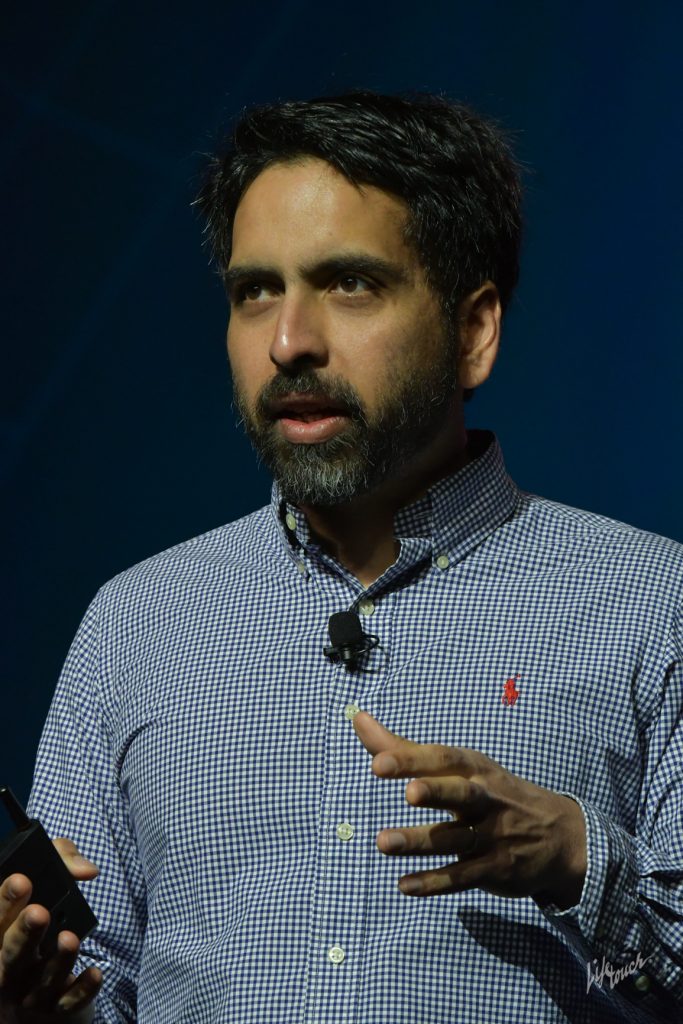The story of how Khan Academy came to be and how it has grown into something much bigger than online videos for tutoring was brought to life during the AASA conference’s 3rd General Session Saturday by Sal Kahn, the founder of the education model used today by 65 million in 190 countries.
The impact of Khan Academy on young people’s lives was driven home by its success stories. Charlie, a two-time high school dropout, used Khan Academy to fill in gaps in his knowledge. He realized he loved math and science, and he began to excel in school. He graduated as valedictorian of his class.
When Charlie was hired by Khan Academy after completing college, “Khan Academy might help solve my labor problem,” Khan joked.
The program started back in 2004 when Khan was attending a wedding and his 12-year-old cousin Nadia told him she had done poorly on a math exam, saying she just didn’t think she had a mind for math. He offered to tutor her because, as he told her, he was “100 percent sure” she could master the material.
His pool of cousins requesting tutoring grew to 10 to 12. To take tutoring to scale, Khan videotaped his lessons, which he posted on YouTube for everyone to view. He watched the viewership grow. Six months later, he got a thank you from a viewer.
Fast-forward to 2009 when Khan took a big risk. With his wife’s blessing, he quit his job as a hedge fund analyst and created the nonprofit Khan Academy. Khan did not think small when the nonprofit paperwork asked him to state the mission: “A free quality education for anyone, anywhere.”
His first generous donation of $100,000 allowed Khan Academy to create software of practice exercises. Similar to video games, students move to higher levels and they are awarded badges. And over time, the teacher interface improved so instructors can view which questions each student missed or mastered.
Donations from Google and the Gates Foundation allowed Kahn Academy to grow to 150 staffers. In addition, 14,000 volunteers have played an important role translating lessons into other languages.
Initially Khan found it counterintuitive that students say they prefer the videos to a regular lecture because the technology allows them to review material and go at their own pace. He sees Khan Academy as a way to liberate teachers to have time for diagnosing students’ weaknesses.
He is excited about a partnership with The College Board to create what he calls “the best-ever, free test-prep” software. If a student gives permission to download that student’s test results, the College Board will make that student’s PSAT valuable as a diagnostic tool.
The Khan Academy believes the test data can be used as a learning tool by revealing where students have those “Swiss cheese gaps in their knowledge.” Then the student has appropriate lessons to learn what they missed.
Attendees interested in working with Khan Academy can visit www.khanacademydistricts.org.
(Liz Griffin is a senior editor for Conference Daily Online.)


